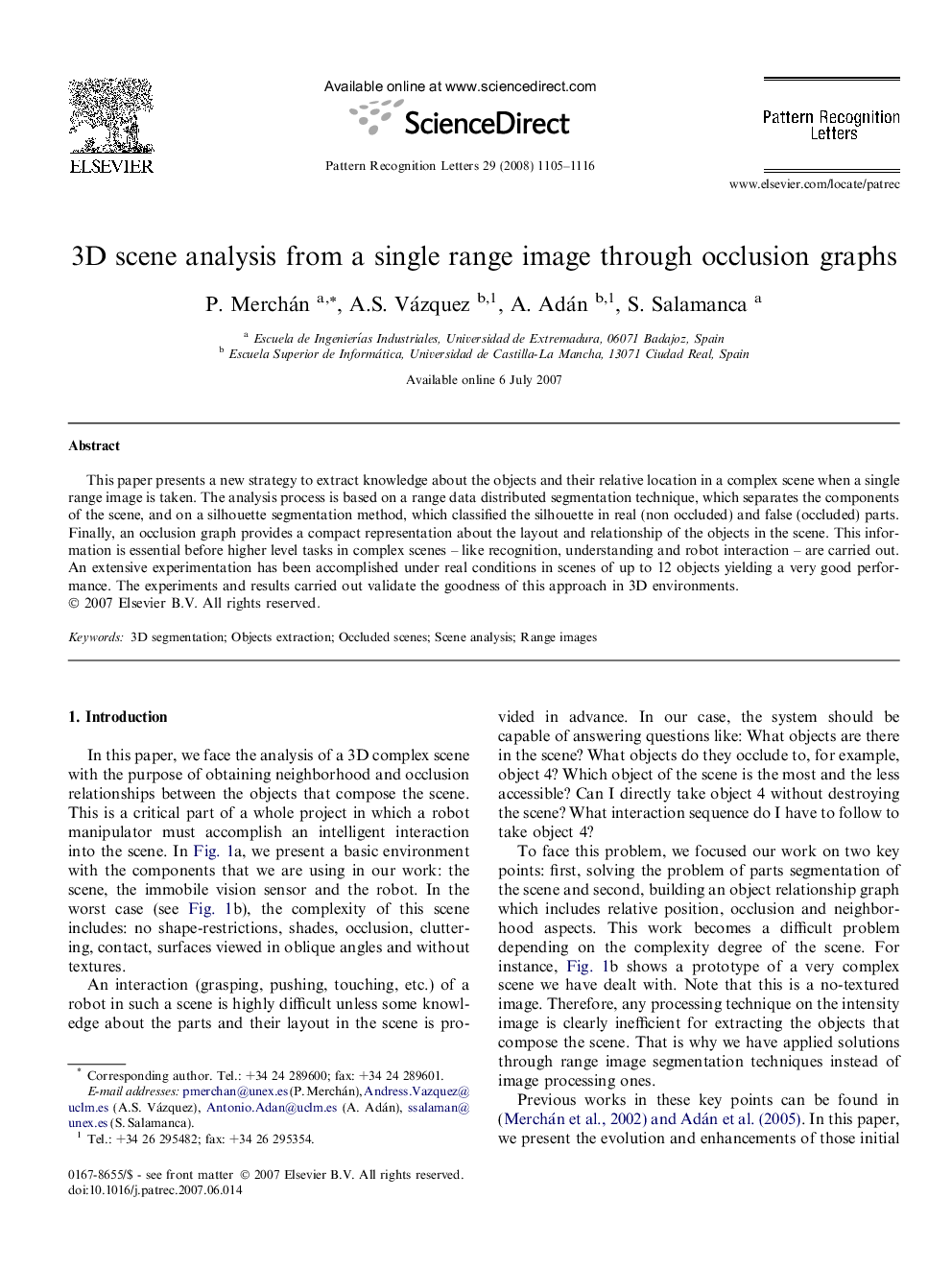| Article ID | Journal | Published Year | Pages | File Type |
|---|---|---|---|---|
| 534887 | Pattern Recognition Letters | 2008 | 12 Pages |
This paper presents a new strategy to extract knowledge about the objects and their relative location in a complex scene when a single range image is taken. The analysis process is based on a range data distributed segmentation technique, which separates the components of the scene, and on a silhouette segmentation method, which classified the silhouette in real (non occluded) and false (occluded) parts. Finally, an occlusion graph provides a compact representation about the layout and relationship of the objects in the scene. This information is essential before higher level tasks in complex scenes – like recognition, understanding and robot interaction – are carried out. An extensive experimentation has been accomplished under real conditions in scenes of up to 12 objects yielding a very good performance. The experiments and results carried out validate the goodness of this approach in 3D environments.
